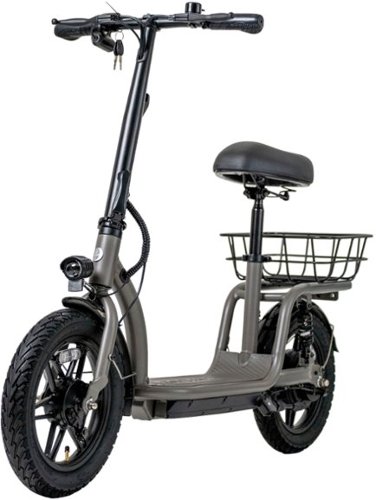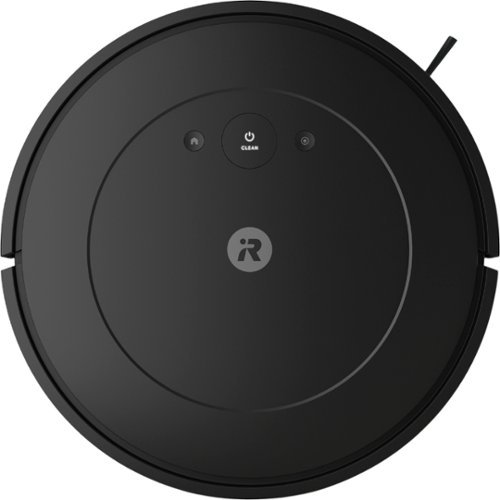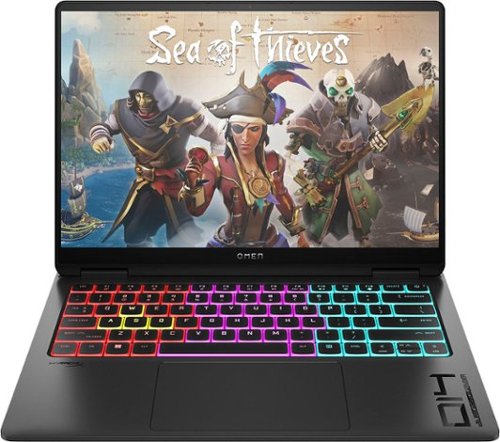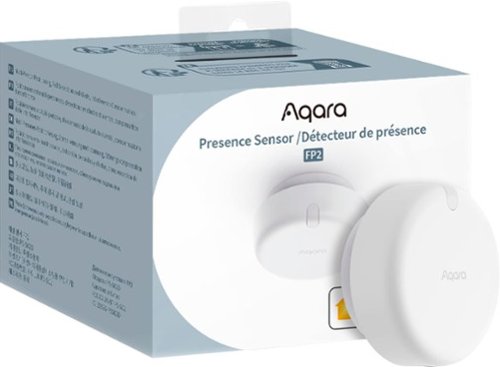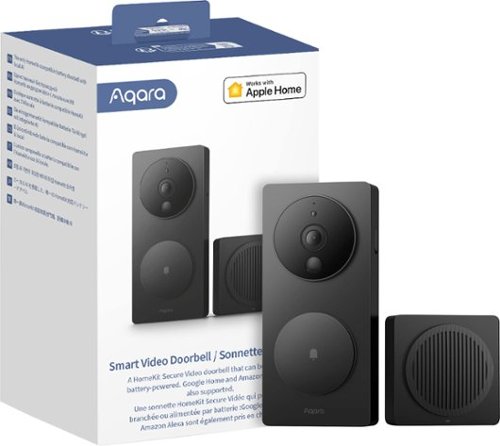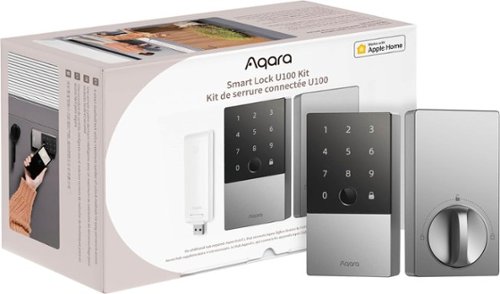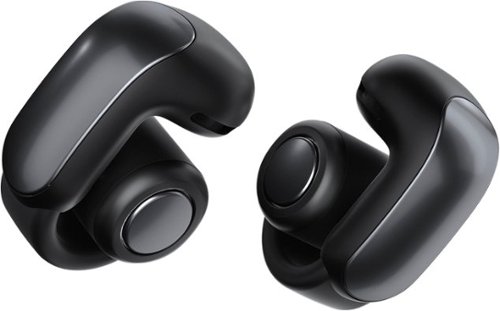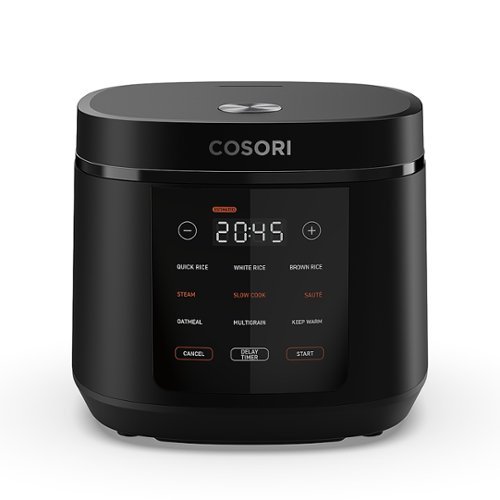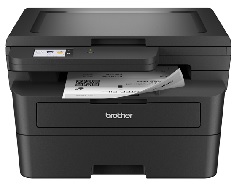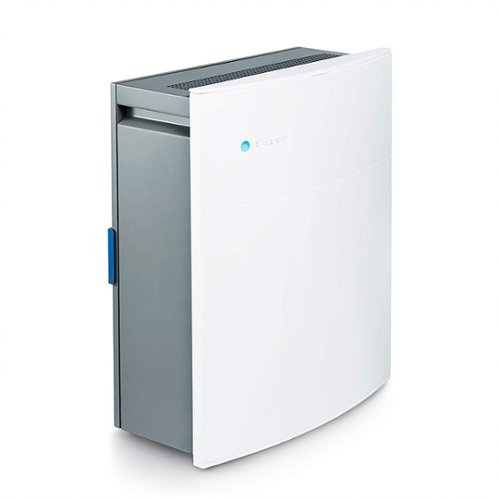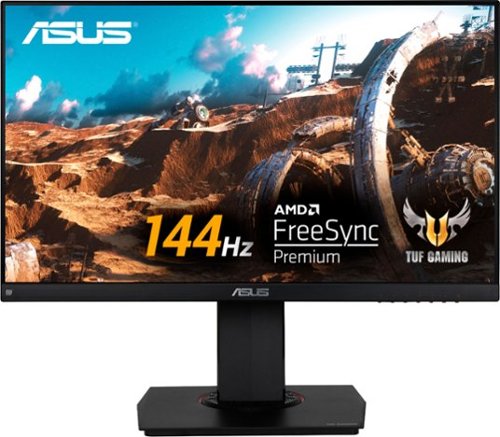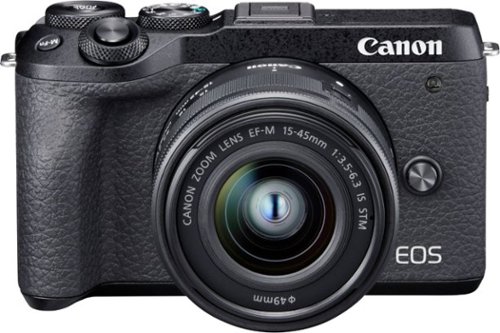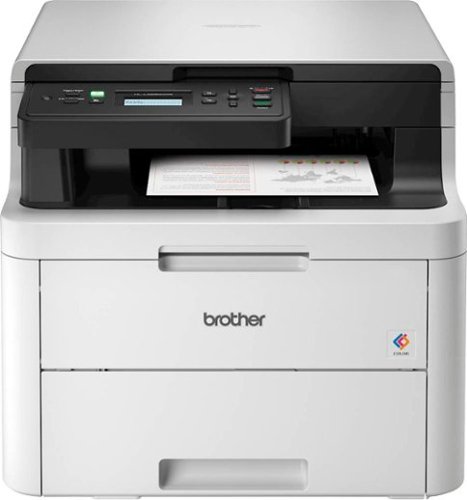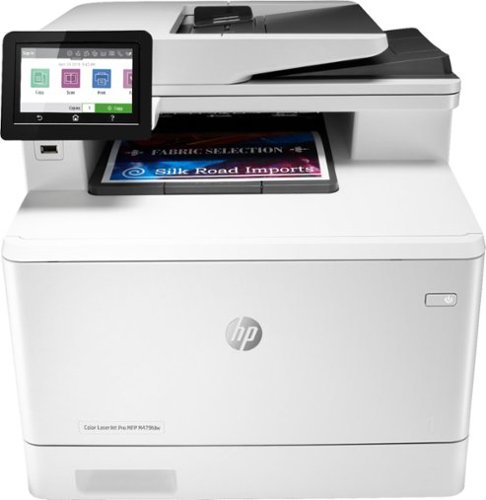ReviewedByPhil's stats
- Review count134
- Helpfulness votes1,231
- First reviewJanuary 6, 2016
- Last reviewApril 15, 2024
- Featured reviews0
- Average rating4.6
Reviews comments
- Review comment count0
- Helpfulness votes0
- First review commentNone
- Last review commentNone
- Featured review comments0
Questions
- Question count0
- Helpfulness votes0
- First questionNone
- Last questionNone
- Featured questions0
- Answer count7
- Helpfulness votes7
- First answerJanuary 18, 2017
- Last answerSeptember 1, 2021
- Featured answers0
- Best answers1
The perfect blend of scooter and bike, the FLEX VOYAGER is great for errands or just riding in comfort. Free storage basket included. Improved speed and range. The FLEX VOYAGER can reach 15-19 miles per charge with a 15.5 MPH top speed. It is the perfect way to make it to class on time. Powered by a 350W Motor and a 36V 8.0aH battery.
Customer Rating

4
Fun to ride, good speed and distance, but heavy
on April 15, 2024
Posted by: ReviewedByPhil
The GoTrax Flex Voyager scooter is my first electric vehicle from this brand, though not my first e-bike. I like its design because it is foldable for storage and has a height adjustable seat which is perfect for shorter riders like myself. While it does not have manual foot pedals like a traditional bicycle, it rides like one while you’re seated, and you can also ride fully standing as a scooter. It comes with a basket, headlight, and signal bell.
There are a few assembly steps required out-of-the-box, and you’ll receive the tools needed, an Allen wrench and fixed wrench, as well as illustrated instructions. Putting it together consists of attaching the handlebar, assembling and adjusting the saddle (seat), and installing the rear basket. Assembly took me about 10 minutes on my own.
The saddle cushion is thick and comfortable, can be tilted forward or back, and rotates as well. It is wrapped in a faux leather material, though mine arrived with a tiny tear near the seam on one side, so that doesn’t bode well for its longevity. I use the lowest height setting for the seat as this allows me to mount and dismount easily. A quick-release clamp lets you adjust the seat height on-the-fly, if there are multiple users. The deck is also a decent size measuring 8 inches wide and 16 inches front to back, allowing me to place both feet on the board side-by-side or one in front of the other.
The kickstand lets you park the scooter free-standing. Its wide tires are suitable for paved surfaces or roads and should be inflated to 36 PSI, made easier by the inclusion of a short, flexible fill tube extension. I was surprised to find that the scooter also travelled across my uncut grassy lawn with relative ease, at least in the flat areas. The tires should be able to handle dirt and gravel paths as well, though we don’t have any near me that I was able to ride on. The fenders help prevent the wheels from kicking up a lot of mud and dirt. Just note that while the device has an IPX4 water-resistance rating for incidental splashes, it is not waterproof and should not be used or left in wet conditions which may damage the finish and electronics.
Fully assembled, the scooter measure 53” long, 39” tall, and 20” wide at the handle bars. It is fairly hefty at a little over 60 lbs though is rated to carry up to 264 lbs. The frame is made from durable aluminum alloy metal tubing, and the battery and electronics are housed in a compartment beneath the deck. Inside is a non-replaceable 36V x 8Ah battery and 350 Watt motor and much of the wiring runs through the frame, though are exposed at the handle bar and rear/front wheels where they attach to external components. The rear basket a bit small at 9”L x 12”W x 5”H but would fit a few groceries or a backpack; I’d recommend using bungee cables to keep things strapped in so they don’t bounce out. There’s also a hook on the main stem where you can hang a small bag or your helmet.
You’ll want to charge the battery fully before first use, which takes about 5.5 hours if depleted. The charger is a laptop-style power brick with a barrel connector that plugs into a port under the deck protected by a rubber plug. When charging, the LED on the adapter will be red and turns green when the battery is fully charged.
Each tire is fitted with a reflector and there is another at the front below the headlight which is decent, but not super bright. At the rear, a red brake light flashes any time you engage the front or rear brakes. A simple single-strike bell is pre-mounted at the left handlebar grip that you can ring with your thumb, and at the right handlebar are the throttle and LCD that displays the remaining battery life using 4 progress bars. The LCD does not show current travel speed, distance, or travel time.
The motor has a keyed ignition which makes it slightly more difficult for it to be stolen. Two keys are included for your convenience; however, it’s unclear whether or not you can order replacements. Turning the key to the right twice turns on the headlamp at the front. The motor is engaged by twisting the half grip throttle towards you, and the speed is adjustable depending on the amount that you turn it. The top speed achievable is around 15.5 mph and it has a max range of 15 miles on a single charge, though this can be affected by things like terrain, load weight, and riding/braking habits. When you turn it off, the headlight will also turn off.
The motor on this scooter ramps up gradually but it can accelerate rapidly. I found that small bumps were adequately absorbed by the rear shock absorbers while seated, however, I could not get the seat to stop swiveling not matter how much I tightened the clamp’s thumbscrew, which was a little annoying. I was surprised how well the scooter handled going uphill with inclines around 15-20°, resulting in only a moderate decrease in speed, though you could tell the motor was working hard, and it did struggle on steeper gradients. Inertia probably helped somewhat since I found that releasing the throttle mid-ascent could leave you walking the rest of the way if the scooter couldn’t pick up enough speed to continue uphill.
The disc brakes for the scooter are engaged using hand levers, and you simply squeeze the left one for the front brakes and right for rear brakes. Just remember to apply the rear brakes slightly before the front ones for better control of the weight transfer in the event of a sudden stop. You’ll need to start applying the brakes a lot sooner than you might expect though, as you need a lot of stopping distance to come to a full stop. At top speed, it took me nearly 25 ft to come to a complete stop when applying both brakes fully. Brake strength is adjustable as well as the amount of absorption from the suspension.
Overall, as my first e-scooter, my experience with the Flex Voyager has been really great so far. It was easy to put together and nearly as simple as riding as a manual bike or scooter. The battery can get you to a pretty far distance, and the top speed is zippy but not scary fast. If you ride infrequently, you’ll need to remember to charge it prior to riding and maintain the battery by topping it up every few months. Since it’s not waterproof, you will have to store it indoors or in a sheltered location protected from sun and rain. Due to its weight, however, I wouldn’t recommend it for folks who’d have to carry it up and down a lot of steps.
I would recommend this to a friend!

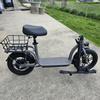
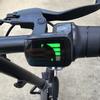
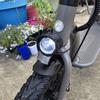
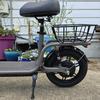
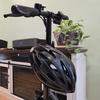
With the Roomba Vac Essential robot, cleaning floors is simple. Simply use the iRobot Home App or press the clean button and let it get to work. This high-tech yet uncomplicated robot has the essential features people love with powerful suction for a deep clean. And it has a low-profile design, so it can grab dirt and dust from hard-to-reach places, like under the couch. It has smart navigation and an Edge-Sweeping Brush, so sensors help it navigate around furniture and avoid falling down stairs while it meticulously cleans your floors, including corners and edges.
Customer Rating

4
Basic cleaning/scheduling but works well
on April 13, 2024
Posted by: ReviewedByPhil
The Roomba Vac Essential is iRobot’s no-frills, budget-friendly, entry-level robot vacuum. It’ll perform all the perfunctory duties you'd expect including running on a schedule, remote start and stop via the iRobot app, home automation integration, and returning to the base station automatically to charge. However, don’t expect more advanced capabilities like room mapping, obstacle avoidance, or self-emptying.
The robot has a 12.5” diameter and is 3.25” tall with a matte black finish, front and side bumpers, side sweeping brush, and 3 cliff/fall sensors. There are two spring-loaded, large driving wheels on the bottom that allow it to traverse uneven surfaces with ease, a 360° front wheel for executing tight turns, and central roller brush for picking up dust and debris. Both the side brush and roller brush are removable for cleaning or replacement, and the battery can also be removed for replacement or disposal. This robot is designed primarily for cleaning hard floors, as the base station needs to be placed on a hard surface with 1.5 ft of clearance to the sides and 4ft of clearance in front and away from stairs. I appreciated the inclusion of a Velcro cable organizing strap on the back of the dock.
The 0.1 gallon dust bin has a small capacity that generally needs to be emptied manually after each run. A cleaning brush and hair tangle razor is conveniently stored on top of the bin to help you clean and maintain the machine. The bin releases from the back of the robot with the press of a button and has a one-way dust flap over the intake to prevent accidental spilling of its contents. The hinged top opens easily for emptying, and it can be handwashed, if needed. There’s also a washable and replaceable HEPA filter in the lid that cleans the air as it exhausts from the machine and a spare filter is included. I find that the vacuum does a good job picking up fine dust and debris and captures a fair amount even after I’ve already cleaned with my upright vacuum.
The robot runs back and forth in parallel rows, which I prefer over the “random” path method. There’s also a spot cleaning function to clean a 4 ft diameter circle wherever you place the robot down. The robot is supposed to be able to detect and avoid furniture, though that said, it will still bump your walls and furniture when it first encounters them; once it knows their locations, it will slow down as it approaches any area where it previously made contact with something. A rubber strip at the bottom of the bumper helps cushion the impact, but this can leave black marks on your walls and floor trim. I would have liked to have seen an additional bumper along the top to better protect the glossy plastic over the sensors, as I know from experience that if it picks up enough scratches over time from collisions, they may reduce the effectiveness of the sensors.
The main drawback to the simplicity of its functionality is that you cannot control where it travels to clean. It also has no memory of where it has already been, so if the unit returns to the station to recharge before it finishes cleaning all the areas it has access to, on the next run it will not pickup where it left off; it will simply start over again from the beginning. For me, the robot ran for 1 hour and 15 minutes on high suction on our first floor before returning to the station.
The robot successfully avoided falling down steps and crossed ¼” high floor transitions between rooms just fine. It was also able to navigate up onto a ½” thick mat, and the short height allowed it to go under and clean right up to the toe-kick of our cabinetry. However, the clearance under our dishwasher is a bit lower due to uneven floors, and it ended up rubbing the underside of the steel door and picking up some scratches on top of the unit. It also has a tendency to push around or knock over lightweight items that sit on the floor. Unfortunately, there is no way to prevent the robot from entering an area other than physically blocking its access or path, for example, to prevent it from going near a fireplace or pushing pet food and water bowls.
I found that when it went over several power cords, it was able to cross them without getting stuck or tangled, though this may not always be the case. It did get stuck once under a rocking recliner and trapped under the kitchen table in between chair legs and had to be rescued; it sent a notification to the app when this happened. If you cannot locate the robot, you can activate an audible tone from the app that plays for a few seconds to help you find it, provided it has some battery life left and WiFi signal.
In the app you have the option to change a couple settings, mainly suction power from low, medium, and high, which may save or consume more battery power respectively, and setting it to clean without a time limit or a timed session of 15, 30, or 45 minutes. You can also schedule regular cleanings to start at a specific time on recurring days of the week or automate it to do so when you leave and/or return home using triggers such as GPS location, smart lock activity, or events detected by other smart IoT devices.
You'll have the option of setting up smart home AI control using Alexa or Google assistants, and those worked just fine for starting and stopping cleaning using voice commands. When cleaning is paused, the job will automatically be cancelled if it is not restarted within 1 hr and 30 mins. The app will keep track of data from the 30 most recent cleaning events within the last 90 days, and keeps a count of lifetime number of cleaning jobs, total runtime, and “dirt events” (when it senses an area/areas that may have a lot of debris).
Overall, I found this robot vacuum to be a very basic but effective robot vacuum that can automate regular cleaning of the floors. It can be remotely controlled, integrated into a smart home ecosystem, and effectively picks up a good amount of dirt and debris. It’ll work best for folks that have hard flooring, a lot of open space that is free of obstacles like cords and delicate or lightweight décor, and a small enough area that it can be covered in a single cleaning session. Just remember you’ll need to regularly empty its bin manually and physically block it from going anywhere you don’t want it to.
I would recommend this to a friend!
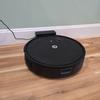
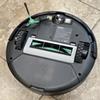
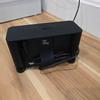
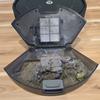
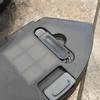

Get the One That Games! With an ultra thin and light all-metal chassis that feels as premium as it looks, longer and more efficient battery life with USB-C fast charge, new Intel Core Ultra processor with powerful NVIDIA GeForce RTX graphics, and a 2.8K 120Hz OLED display that's as vibrant as it is fast.
Customer Rating

5
Clear, vivid display, fast and powerful
on March 6, 2024
Posted by: ReviewedByPhil
The 14” Transcend is a powerhouse of a portable gaming laptop with a clean, high-end aesthetic. It has an all-aluminum metal exterior with smooth rounded edges that is quite thin at a little over 0.5 inch, and it weighs just over 3.5 lbs. While the black matte finish picks up and holds onto fingerprints easily, it’s also available in white which may not show them as readily. There are also a few different build packages, and this is the mid-range configuration.
This build runs on the 115H Intel Core Ultra 7 Series processor with 16 cores, 4.8 GHz max, and 24 MB of L3 cache. It comes with a 1 TB Gen 4 NVMe SSD pre-installed and 16GB of LPDDR5X RAM soldered to the motherboard (not upgradable). The discrete GPU is an NVIDIA GeForce RTX 4060 with 8 GB GDDR6 RAM. These specs are decent for gaming at mid to high quality settings and would work for non-gaming applications as well, though I personally find the screen size a bit cramped for creative work like video editing software.
Interestingly, there is no MUX switch option to use only the discrete GPU, just hybrid or integrated graphics mode are available, though this omission helps to extend its battery life. On a full charge, during casual use for web browsing, work, and watching streaming video content, I was able to get just under 4 hours of use on battery power in 'hybrid' mode. While gaming this was cut down to 1 to 1.5 hrs depending on the quality settings. The laptop handles itself well for most games but may feel a little sluggish at ultra video settings. In first-person shooters like Counterstrike 2 I was able to achieve 100-120 fps consistently without running into performance issues like stuttering and frame drops, though in RPGs like Path of Exile the framerates generally ran between 60-80 fps without exceeding that threshold.
On the right-hand side of the laptop are two USB-A 3.2 Gen 2 ports in the back corner with one featuring sleep charging. On the left hand side is a Thunderbolt 4 (USB-C) port and combo mic/headphone jack. Along the back is a second USB-C 3.2 Gen 2 port and HDMI 2.1 output port. The HDMI and Thunderbolt ports can both be used to connect external displays. As well, both USB-C ports can be used for charging with the 140Watt adapter or with Power Delivery chargers. Allegedly, you’ll get better charging performance out of the port located at the back of the laptop where it’s neatly out of your way, however, in my testing, I was able to get about 50% charge in just 30 minutes using either port.
On the underside, two rubber feet span the width of the laptop at the front and back and two exhaust fans cool the device off during heavy usage. While the grille vent appears to cover a large portion of the base, the intake cutouts are only located above the fans and vent out the back of the laptop. The fans do a great job at keeping the laptop cool during heavy usage and aren’t super loud either, which means you can actually use the onboard speakers during gameplay and still hear them. The stereo speakers are positioned on the bottom towards the front corners and while the sound quality is pretty good, I feel they sometimes sound a little muffled. For that reason I prefer using headphones with this laptop.
The edge-to-edge OLED screen has a 14” diagonal with thin bezels, 120Hz max refresh rate, 500 nits max brightness (HDR), 2 ms response time, and max resolution of 2880 x 1800 (2.8k at 16:10 aspect ratio). The screen quality is the standout feature with deep, true blacks, and vibrant saturated colors across 100% DCI-P3 or 99% sRGB colorspace. While the glossy finish makes glare and reflections worse in bright lighting, it’s not an issue in a darker environment, plus it’s easy to overlook that in favor of the fineness in detail, sharpness, and accurate colors of the 240 PPI display. As tempting as it is to tap the screen though, it is not touch-capable.
Connectivity-wise, it supports WiFi 6E and Bluetooth 5.3 for super-fast connections to external wireless devices like headphones and mobile devices and when used with headphones experiences lag-free syncing with video content. Download speeds were fast and reliable providing an excellent and smooth online/networked gaming experience.
It has a 1080p front facing webcam with dual-array noise canceling mics, perfect for streaming, video chat, and meetings. The full-sized RGB-backlit keyboard has 4 customizable lighting zones and the keys are all edge-lit for easy visibility and a cool gamer aesthetic. The keys are responsive but have a high actuation force albeit with a soft landing, so they don’t make a lot of noise and snap back pretty quickly. The trackpad is generously sized and responds to multi-touch gestures, but the buttons take a beat to disengage, so alternating left and right mouse clicks very quickly isn’t possible. I strongly recommend using an external mouse.
One feature I found interesting was in the ability to create custom key assignment for macros in the OMEN Gaming hub. This is not only useful for executing quick actions or a sequence of keystrokes while gaming, but also has general utility for other applications like automating repetitive work tasks or creating shortcuts. You can also enable some on-screen overlays with stats like CPU temp, framerate, and RAM usage. I was unable, however, to toggle on NVIDIA’s GeForce Experience in-game overlay.
Overall, the Transcend 14 is a powerful lightweight gaming laptop with a gorgeous OLED display that delivers a satisfying gaming experience and excellent visuals for content consumption. It’s fast, responsive, and ultra-portable making great for on-to-go work or play.
I would recommend this to a friend!
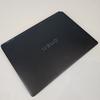
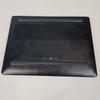
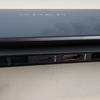
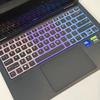
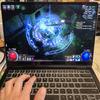
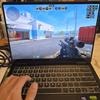
Aqara Presence Sensor FP2 uses cutting-edge millimeter-wave radar technology, which can accurately detect the presence of people even with slight movements. This technology ensures continuity and stability of the smart device. It also has the function of zone positioning, which allows for the automation of different conditions in different zones, such as beds and tables. One space can now be divided into up to 30 small zones and recognize up to five targets (Multi-person Detection). It can also control other smart home devices through ecosystems such as Apple Home to achieve wider applications. It features functions such as human fall recognition, sleep monitoring and a built-in light sensor. Likewise, it is a great helper that can truly combine the diversity of the user's home life and realize the automation of different personalities.
Customer Rating

4
Lots of potential for home automation
on March 3, 2024
Posted by: ReviewedByPhil
I have to admit, I did not really understand the potential of the Aqara FP2 when I first got it. I assumed it was like a motion sensor that would trigger things like my lights when I walked into a room and turn them off when I left. However, it’s much more powerful than that if you use the right home automation ecosystem.
The unit is a small white hockey puck about 2.5” in diameter. It sits on a double-hinged arm attached to a base with a rubber foot and can be oriented vertically (upside-down), at a right angle to or parallel to its base. The base also happens to be magnetic and can be attached to a metal surface or the metal mounting disc (two are included) attached via a screw or adhesive sticker. Setting up the unit in the Aqara Home app is simple and straight forward, since you don’t need an additional hub to connect to, however, you will have to have a 2.4 GHZ WiFi network or use Bluetooth to manage the device settings.
The FP2 sensor uses a 60-GHz mmWave RF sensor and has a 120° detection radius (up to 19.5 ft wide and 26 feet away) and covers about 430 sq ft of space. You can also divide up the sensing area into 30 separate zones and setup unique automations for each one. It can do this because unlike infrared, sound, or motion sensors, this technology can detect very slight movements, even if you're sitting or standing still, and captures data like range, velocity, and angle or movement for high accuracy tracking. This allows it to detect and monitor up to 5 people in a room simultaneously and trigger different actions locally for each person without actually capturing any real “images” of them. There is also a lux light sensor built in so you can trigger automations based on ambient light conditions as well.
The unit is powered via a 6ft USB-C to USBA cable, though doesn’t come with a power adapter, so you’ll need to provide a 5V 1Amp brick and choose a location close to where you’ll plug it in. Note that there’s no internal battery, so the unit will stop functioning if your power goes out but still functions if only the internet is out.
Once the sensor is set up, you’ll be able to map its sensing area and mark where furniture, doors, and windows are. This helps you visualize your space, so you can divide it into zones and create various triggers in more than one location for you home automation. Just note that if you set the sensor up in the corner of a room, the map grid won’t really line up well. It’s up to you how you want to use its sensing data when integrating with home automation ecosystems like Apple Home Kit/Assistant, Google Home, Alexa, and IFTTT. Aqara is also planning on including Matter integration at some point in the future as well.
In the Aqara app, you can set up automations to trigger under a variety of scenarios including when presence is detected in a zone, for a specific duration, or even entering/leaving a room from a specific direction. However, we use Alexa for home automation and although the zones were each pulled into the Alexa app as separate motion detectors, it seems the only trigger conditions currently available are ‘motion detected’ and ‘motion not detected', which essentially is whether someone enters or leaves a zone. So while I'm in my kitchen, it'll turn on the overhead lights, when I'm by the coffee machine it'll switch on the under cabinet lights, and when I leave the room everything turns off.
There also wasn’t a way to setup routines using the FP2’s light sensor in Alexa, though I was able to do so with IFTTT. While not as robust as what Aqara supports natively, the routines did work as advertised and the sensor was very accurate in sensing where in the room multiple people were. In general, the responsiveness was quite fast, not exactly instantaneous but a short enough delay between trigger and automation that it felt seamless as I moved about my space.
There are two other ways it can be used: when ceiling mounted it can detect when an individual falls and send out alerts, which may be helpful if caring for an elderly individual, and if used bedside can be used to monitor sleep (for one person) and tracks things like heart rate, sleep stages, and respiratory rate. There’s also some beta functions available right now for people counting and AI detection of robot vacuums and pets, though these features may not be permanent or included in the future.
Overall, what I like about the FP2 sensor is that with zone control, it can essentially take the place of multiple PIR motion sensors, and there are a number of different ways it can be used. For me, the potential is there for it to do pretty some advanced automation sequences, but your mileage may vary depending on with automation ecosystem you’re using.
I would recommend this to a friend!
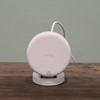
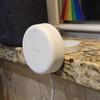
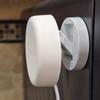



Aqara Smart Video Doorbell G4 is a unique video doorbell that can be wired or battery-powered. It is also the first battery-powered option to work with Apple’s HomeKit Secure Video and supports streaming to Google and Alexa smart displays, featuring local AI used for facial recognition alerts, automations, and much more.
Customer Rating

5
Clear, responsive video/audio, wired or wireless
on March 1, 2024
Posted by: ReviewedByPhil
The Aqara Video Doorbell isn’t my first smart video doorbell, however, it is my first one from this brand. The doorbell can be setup wirelessly to run on disposable batteries or wired to existing doorbell wiring; just note that your doorbell transformer needs to output 8-24V power. For installation and mounting, you’ll receive screws, wall anchors, and a 20° wedge if you need to horizontally angle the doorbell away from a corner wall. The kit also includes an indoor chime speaker, which acts as a WiFi hub, and USB-C cable to power it. The chime accepts a microSD card up to 512GB (not included) for local storage of videos and photos captured by the doorbell and does not require a subscription.
Setup is simple and straightforward with the Aqara Home app, and you’ll connect the chime unit directly to a 2.4 GHZ WiFi network which in turn will transmit data to and from the video doorbell; note that 5 GHz networks are not supported. The camera is secured to the backplate using a spring-loaded security screw, which is a clever way to ensure that you don’t drop or lose it. Once you slide the housing up and away from it, you can load 6 AA batteries inside (included). The unit comes pre-fitted with double-sided adhesive tape or optionally you can mount the camera doorbell permanently with the screws and anchors. If you wish to wire the doorbell, a punch-out window in the mounting plate can be removed, so you can attach the wires to the screw terminals on the back of the camera unit.
In the app, you can view a live feed from the video doorbell, manually capture recordings and stills, review recorded video footage and photos, and change the device’s settings. When the doorbell button is pressed, the indoor chime will sound (volume is adjustable up to 95 dB), and a LED ring around the button will illuminate indicating that the camera is recording; however, this light can be disabled in the settings. It automatically captures a short video clip of the event and sends push notifications to your app. You can also set the camera to record other events like loitering (general motion detection) and device tampering, as well as sound an alarm if the unit is removed from the backplate.
The camera captures a wide-angle, horizontal, 162° FOV image in 1080p quality and has automatic IR night vision when it’s dark out. In general, I found the video, image, and sound quality to be quite good. It has decent contrast and color and the recordings are clear, though by default there is a fisheye effect that distorts the image at the edges. Enabling lens correction squares the image so it looks more natural, which I preferred. However, be aware that switching between the two modes often can affect the device’s ability to recognize faces properly. Nighttime footage appears in black and white and some details are lost or fuzzy which makes it harder for the facial recognition to be as accurate. The other thing is since the video is oriented horizontally, you can't see the ground close to the camera, so if a package is left in that area, you won’t see it.
One smart feature you can enable is the AI facial recognition of frequent visitors. After capturing a collection of images, you can manage the facial data and tag them with names and trigger custom events when those individuals are detected on the camera, for example, playing a custom ringtone (up to 5 MP3s). Amazingly, all the AI facial recognition is performed in the chime unit itself and not on the cloud, so it’ll still work even without internet access. However, other advanced AI recognition like packages and animals were not available.
You can interact with folks in front of the camera by using the intercom feature in the app and while doing so, mask your voice with 3 different sounding filters: uncle, robot, and clown, which I thought was interesting. You can also adjust the camera’s motion sensitivity, define up to 3 privacy/occlusion zones, and enable timestamps on your footage. Just note that the privacy areas will be masked in the recordings and motion in these areas will not trigger events.
If you’ve inserted an SD card, by default the files saved to it are set to loop recording and will overwrite the oldest footage when the card is full. You can also have the files automatically sync/offload to network attached storage (NAS), like a computer on the same network, so that you’ll have access to more storage capacity for a longer video history, retaining up to 1 year of footage. However, an SD card is actually not required as the unit includes 7 days of free cloud storage without a subscription. Recorded events appear on a timeline in the app and you can color code/highlight different types of events so that you can find and review them quickly.
Continuous 24/7 recording is available as an option, which would store about 3 days worth of continuous recordings on a 32GB card, though it is only available when the unit is wired as to not quickly deplete the batteries, which can last 4 months depending on frequency of usage and operating temperatures. When wired, the installed batteries act as backup power if your power goes out.
The doorbell also has a number of compatible third-party integrations including Apple and Google Home, Alexa, and IFTTT allowing you to use the doorbell in custom automations with your other IoT devices, for example, having the video feed pop up automatically on a connected screen like Echo Show or Google Home Hub when the doorbell is pressed. Aqara also plans to add Matter integration as some point in the future through a firmware update.
The responsiveness between the doorbell and app was very good, and there is very minimal lag between camera detection and notifications/automations. Not only does this allow you to respond to doorbell presses right away, it makes communicating via the intercom way more pleasant as you’ll be able to see and hear the camera’s live feed in nearly real-time. I also liked that you can link other devices to it, for example Aqara's smart locks, so that you can unlock it right from the video monitor screen.
Overall, the Aqara G4 is the most fully featured video doorbell that I’ve tried to date, and I really appreciate the free cloud storage, unlimited 24/7 local recording, integrated facial recognition, and multiple compatible smart home integrations. With both wired and wireless options, anyone can install this doorbell, and combining its WiFi hub with an indoor chime is super convenient. The video and audio quality are already pretty good, but if a 2K or 4K version becomes available, I wouldn’t hesitate to trade up.
I would recommend this to a friend!
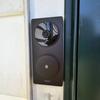
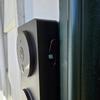
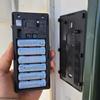
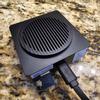
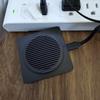

Say goodbye to the hassle of fumbling with keys and welcome the seamless experience of unlocking your door with a simple touch of your iPhone or Apple Watch. By also fully supports the Apple Home app, including guest access code, gaining entry to your abode has never been easier or cooler. Even if there's a power outage of your Apple devices, you can still tap your device and enter your home effortlessly.
Customer Rating

5
Multi-entry, Secure, Easy to manage
on February 29, 2024
Posted by: ReviewedByPhil
This smart lock is my first from Aqara, though I have used several other brands' locks in the past. I like that there are multiple ways to gain entry to your home and unlock the device electronically, including the numeric touch keypad, fingerprint, remotely using the app over WiFi or Bluetooth, and NFC tapping with your smartphone, wearable, or included tags. You basically never have to worry about getting locked out because even if the batteries go flat, there’s an emergency USB-C charging port that will let you power the unit up, or you can use the included physical keys.
Installation was straight forward since I was replacing an existing deadbolt, however, I should mention that popping off the knob plate on the internal unit was much more difficult than I anticipated as the included plastic tool just wasn’t rigid enough, and I ended up using two flathead screwdrivers to pry it off. The U100 comes with its own tumbler and pair of keys as well as bolt, catch, and strike plates, so even if you don’t already have an existing deadbolt, a template is provided so you can drill the appropriate holes in door and frame for installation. The lock requires 4 AA batteries and is advertised to last up to 8 months (with 8 unlocks per day).
After installation, you’ll need to download and install the Aqara Home app to setup the smart features of the lock. The lock can connect to your smartphone using Bluetooth or over your home WiFi network by first binding to the included ZigBee hub. The hub is a small USB stick device that you plug-in nearby the lock and is hinged, so you can angle it up to 90-degrees to its USB port; it can connect to up to 2 devices and also act as a WiFi repeater. The hub is the bridge between your lock and WiFi network and allows it to interact with other services like AI Voice Assistants. The hub is not required if you are using Apple Home, and a different hub would required for Matter support.
Generating virtual keys in the app for multiple users is easy and intuitive. For occupants of the home, you can store up to 10 fingerprints, 2 pass codes, and 2 NFC devices per user, but for temporary users, you’ll set up pass codes that can have limitations like scheduling specific days and times they can be used, for example for a housekeeper or dog walker, or a specific validity period which would be great for visiting guests and short-term rental properties. You can also create one-time use only pass codes for things like deliveries and drop offs.
One thing to remember is when using NFC unlocking, you’ll need to tap the lock in the middle of the keypad. For security, remote unlocking and unlocking via automations are disabled by default and can be toggled on/off in the app at any time. All your sensitive data like fingerprints and pass codes are stored locally to the lock and not the cloud and will continue to operate the lock even if your power (and WiFi) goes out.
This lock features auto-locking without the need for any additional sensors, as the gyroscope used to detect whether the door is closed is embedded in the lock itself. It can also lock automatically each time the door is closed, after a set delay interval, if the door hasn’t been opened after unlocking remotely, and you can enable swipe to lock on the keypad for immediate locking. There is an alarm that, if enabled, sounds when the door is left open for longer than 3 seconds up to 3 minutes. Do Not Disturb turns off the sounds from the lock within a specific time interval, like late at night, though the lock can still be unlocked by users. Just note that the ‘door not locked’ alarm will still sound while this mode is active.
On the flip side, you can toggle on “passage” mode which will prevent the lock from automatically locking until the mode is disabled or the door is manually locked, which is great for parties if you have guests coming and going, or you are simply going in an out frequently/briefly and don’t want to have to unlock the door.
If you enable away mode, the app will send you notifications and trigger set automations if the door is unlocked from the inside or via a key. You can easily setup geofencing with other integrations like IFTTT to enable this mode automatically when you leave the premises. Another security feature locks out the keypad, including fingerprints and NFC, for a set period of time after 10 failed attempts to unlock occur within 10 minutes. This helps prevent any brute force attempts to guess your password and anti-peep masking lets you enter random digits before and after your passcode to make it harder for anyone watching to see your code.
Overall, the U100 offers everything that I want in a smart lock. It was easy to install and there are multiple methods of entry, backup options if the batteries run out, a built-in door position sensor, and you can give or rescind access in the app on-the-fly. With the ZigBee hub and WiFi connectivity, you can manage the door remotely from anywhere, and the lock works with many different home automation services including Alexa, Apple, Google, and IFTTT with plans for Matter integration through a software update in the future.
I would recommend this to a friend!
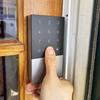
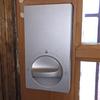
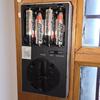
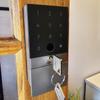

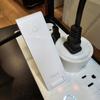
To the music lovers with a playlist for every mood and moment, meet your new obsession. Bose designed earbuds with OpenAudio technology that combines complete openness to your surroundings with rich, private sound only you can hear. Get your run on, take a call, go all day. Do whatever your thing is and pause for nothing. Compromise? A word you don’t believe in. With Bose Immersive Audio, the open-ear headphones don’t just feel good and look good, they bring you closer to your music. Bose Immersive Audio spatializes music so you’re not only listening to the music. You’re in it. Are you ready to change the way you listen?
Customer Rating

5
Nothing in your ears but great sound
on February 23, 2024
Posted by: ReviewedByPhil
I’ll start off by saying that I am not a fan of most ear buds because having things in my ears hurts my ear canals after a while, so I personally prefer on-ear, over-ear, or open ear device alternatives. The Bose Ultra’s open ear design are truly unique in their execution and are comfortable to wear while providing a clean listening experience that still lets me be aware of my surroundings.
These ear buds have an innovative wrap around design that hugs the outer ear just above the ear lobe, looking more like a cuff earring than a set of earphones. No part of it goes into your ear canal; instead the speaker is nestled in the groove of your ear and sound is directed into your ear canal at an upward angle. The fit of the ear buds is one-size, and the flexible soft silicone arm applies light but sufficient spring force to hold the barrel controller behind your ear. While that means there’s no way to customize the fit, you can adjust the positioning of the ear bud by slightly sliding it up or down to find the most comfortable position for you, however, I found that moving it can noticeably change the sound quality.
To setup and pair with the ear buds, you’ll need to download and install the Bose Music app to your smart device. From there, setup was fairly straightforward and took only a few minutes. After pairing, you can listen to a demo track that showcase its “Immersive Audio” mode which has two settings, “Still” and “Motion.” These modes give the sound a sense of dimensional space, placing the sound in front of you with stereo separation. The difference between them is that with Still, the sound will project from a fixed location even as you turn your head; though note that if you face a different direction long enough, the spatial positioning will update and re-center on you. With Motion the sound follows you, so that it keeps its position relative to you which is better if you’ll be moving around a lot. You also have the option to turn immersive mode off (aka stereo mode), which can help extend battery life, but I found the sound to be a little flatter and confined to my headspace.
The sound from these ear buds overall is pleasing and enveloping while still allowing you to hear other sounds in your environment. The audio is clean and clear with a light and airy quality, likely due to the open design. As for bass, it’s apparent but not overly pronounced. At moderate to low volume levels there’s virtually no sound bleeding, and folks standing a few feet from you won’t be able to hear what you’re listening to. However, when you turn up the volume it can get quite loud, and while you could effectively block out all other sounds, that sort of defeats the main benefit to having an open ear design. Plus, at higher volumes, sound can bleed quite a bit, making what you’re listening to perceptible to bystanders, and I feel the quality distorts with overly bright trebles and muddy midranges.
One of the things that I liked about these is that when no audio is playing, the ear buds go silent and don’t produce any hiss of white noise during standby. The drawback is that it takes a split second for them to wake up, so notification sounds from your device may get slightly clipped. However, the low-latency 5.3 Bluetooth protocol also makes them great for watching video content with perfectly synced audio. These are slightly water resistant too, with an IPX4 rating, so would be fine for a sweaty workout and survive a drizzle.
Each ear bud has a single physical click-button on the top of the barrel that wraps behind your ear. You need to press down on the button to use it as it is not a touch control. There are five key combinations for the controls including single, double, and triple clicks for play/pause and track skipping, as well as long-press (shortcut) and short press followed by a long press for volume control. The shortcut function can be customized to cycle through modes, immersive audio setting, source selection, or activate an AI voice assistant; you can perform different shortcut actions for the left and right ear buds.
Listening modes are presets that you can select based on your environment and preference. The two pre-configured ones are simply Stereo and Immersion, though you can define up to eight custom modes, for example, for when you’re home, on a run, or during your commute. The only thing you’re really changing though is the Immersion mode and not a custom EQ profile. While you can adjust the bass, mid, and treble EQ by +/-10, these settings are global across modes. There are several pre-defined EQ adjustments like ‘bass boost’ and ‘treble reducer.’ You can also enable ‘auto-volume’ which will adjust the volume based on your surroundings, e.g. increase it when you’re in a noisy environment.
When you take the ear buds out of the case they will announce the battery life remaining as a percentage. You can also view the battery life for each ear bud in the app. The total runtime is advertised at around 7.5 hours on a full charge depending on your listening volume and settings; just note that time will be shorter when you have immersive modes enabled. The included USB-C charging case can deliver up to an additional 19.5 hours of playtime or about 2.5 full charges on-the-go. It charges the ear buds quickly, and they went from 70% to full in just 15 minutes. However, the case itself cannot be charged wirelessly.
Each ear bud has two microphones on it that are used for hands-free calls, interacting with your voice assistant, and auto-volume adjustments. On calls, these mics picked up my voice clearly and the other party had no trouble hearing me, though note that in a loud setting you may sound more faint. Also be aware that the open ear design can feel distracting during a call in crowded spaces as I found it hard to differentiate the call audio from people talking around me.
Overall, the audio performance from these open-ear ear buds is enjoyable and just about as clear as you can get without having anything stuck in your ears. Hands-free calls have acceptable quality but are best in quiet spaces. You won’t have to take them out to hear what’s going on around you, and the spatial imaging of the Immersive modes is a neat feature. The battery life is ok for true wireless ear buds and with the case and a few short charging breaks can get you through an entire day of use. I found them more comfortable than traditional ear buds over long listening sessions, though if you do start to feel the pressure on the back of your ear, you can simply slide the ear piece a bit for some relief.
I would recommend this to a friend!
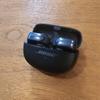
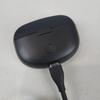
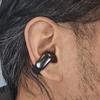
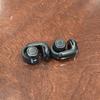
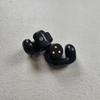

Introducing the SanDisk Extreme M.2 NVMe SSD with PCIe Gen 4.0, engineered to keep up with your demanding creative workflows. Enjoy stellar performance with extreme read speeds up to 5,150MB/s so your PC can stay ahead of your flow as you work, edit, and play faster than ever before. With capacities up to 2TB, your drive can handle data-intensive workloads with ease after you finish the quick, one-screw installation. You can even stay up-to-date on your SSD’s health with the Western Digital Dashboard.
Customer Rating

5
Easy install, decent read/write, fast transfers
on February 16, 2024
Posted by: ReviewedByPhil
I installed this SanDisk Extreme Gen 4 NVMe as a secondary storage drive in my gaming laptop. While it is my first internal SSD from SanDisk, I’ve used several of their parent company’s (Western Digital) SSDs from their other labels. Installation was quick and easy by simply sliding the drive into an open m.2 NVMe slot in my laptop and securing with a single screw (not included). I then had to initialize it in Windows 11 using Disk Management which also partitions and formats the drive.
This mid-tier DRAM-less drive employs a single TLC NAND flash chip and advertises a max sequential read speed up to 5150 MB/s and write speed up to 4900 MB/s. In my testing using CrystalDiskMark I found that the drive performed fairly close to those figures when transferring large files (32GB); transferring smaller files (1GB) allowed the drive to eke out slightly faster speeds. Not only does the drive perform well for gaming purposes, it also handles the demands of content creation just fine for editing and exporting large video files.
Although it does not come with a heat sink, I recommend using one (e.g. a thermal sticker with copper plate), as it can keep the drive running about 5-10°C cooler than without one. Under light loads I observed drive temperatures around 50-60°C (with passive heat sink) and it topped out at just under 80°C during sustained peak writing.
As the drive lacks DRAM, it employs an SLC cache which can sustain peak write speeds up to a certain point, after which it will drop off to a reduced/throttled speed. While not advertised, this cache is likely large, to the tune of 50% of the capacity of the drive or more, so unless you're constantly writing large amounts of data, you’ll likely never encounter this limitation. For normal uses like gaming, streaming, and creative work, you’ll find that it runs smoothly, and its rated lifespan is 600 TBW (Terrabytes Written). This Gen 4 drive is backwards compatible with older systems like Gen 3 and earlier PCIe slots, however, would only perform up to the limitations of those protocols in terms of read and write speeds.
Overall, the SanDisk Extreme performs well for me as a storage drive and while it isn’t the fastest Gen 4 SSD out there, it is an affordable option for everyday computing tasks, casual gaming, and content creation, where the absolute fastest speeds are not essential.
I would recommend this to a friend!
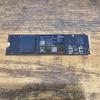
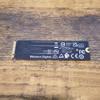
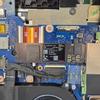



Cook delicious rice with the touch of a button. The COSORI 5.0-Quart Rice Cooker offers 9 functions to cook your favorite type of rice to the perfect texture. Following a precise 6-step cooking process, the rice cooker produces evenly cooked rice every time. It's simple and easy to use with a guided LED display that walks you through the cooking process. When you’re done cooking, all accessories are dishwasher-safe for easy cleanup.
Customer Rating

5
Versatile, easy to use, cooks great
on January 24, 2024
Posted by: ReviewedByPhil
The Cosori 5 Qt Rice Cooker is my first new rice cooker in a long time. Its five quart capacity is nice and large though takes up quite a bit of countertop space (10” W x 12” L x 9” H). With the spring lid open (not removable), the height is around 19 inches and may not fit underneath cabinetry. The design is sleek and modern with a flat top, large touch-screen control panel, and smooth sides. The unit is fairly light at 8.5 lbs without any food in it and the handholds on the bottom make it convenient to move around. When idle for more than 5 minutes, it will automatically go into sleep mode and simply displays “start” on the control panel.
What’s interesting about this rice cooker is that there are 9 different modes, three of which are for rice: white, brown, and quick, as well as other cooking functions like steam, slow cook, sauté, oatmeal, multigrain, and keep warm. When making Jasmine rice, it took about 50 minutes to cook after preheating for 10 minutes. The “white rice” mode cooked it thoroughly and perfectly fluffy. Any rice can be made in a little less time with “quick rice” mode, which saves about 10 minutes, however, may result in a harder textured rice. I loved that there’s an oatmeal setting that can also be used for rice porridge, as I make both of these quite frequently. After cooking is completed, the unit automatically enters “keep warm” mode and can hold the temperature up to 24 hours. You can also set a delayed start on the unit up to 24 hours to perfectly time your meals to be ready when you arrive home.
The unit comes with a plastic steamer basket insert which is thick and durable. There are small handles on the sides to help you lift it out of the cooker easily, and it is deep enough (3 inches) to steam a decent quantity of food, like veggies, which can be done at the same time as cooking your rice. I also really like steaming whole eggs this way as I find you can control the final texture of them (hard or soft) better than with boiling.
The inner pot is non-stick and has water level markings for different food quantities when using the various modes. These are convenient for adding the right amount of water without measuring. However, the smallest quantities marked are 2 cups of dry grain, so if you need to make less, for example 1 cup of rice for one or two servings, you’ll have to calculate the water amount accordingly and the ratios are listed in the manual. The maximum capacity is 10 cups of dry grain which makes up to 5 quarts cooked. I also really like the included scoop as it feels durable, is scratch-free, and stands up on its end, keeping the paddle off your counters without a hanger protruding from the machine.
The unit makes very loud beeps when you power it on, select functions on the screen, and also after preheating and cooking. This helps ensure that you hear its alerts but you cannot change the volume level or turn it off. The unit is not “smart” so there’s no Bluetooth pairing or remote control/monitoring; however, Cosori has a smartphone app, VeSync, where you can browse recipes to make in the cooker. There is also a full-color recipe book with 10 recipes to get you started making delicious meals in the cooker.
For Sauté mode, the unit pre-heats quickly in about 3 minutes, and I was able to brown ground beef in the unit in about 5 minutes. The nice part about cooking in the pot is that the walls are high so there’s little spatter outside of the unit for easier cleanup. Just remember not to use metal utensils in it to avoid scratching the non-stick coating. When the lid is opened after cooking, there’s a drip tray along the back to collect any condensation that may run off the inner lid. The inner pot and inner lid are easily removed for cleaning, and a condensation cup is hidden behind the inner lid that captures a couple tablespoons of condensation while cooking; any overflow simply drips back into the vessel without making a mess on your countertop. Note that the cooker lid cannot be closed without the inner lid installed.
My only complaint is that since the steam vent is located on top of the lid towards the back, when used on my countertops it steams up the face of my cabinets. Instead, I have to use this machine on the kitchen table so the moisture won’t affect my cabinetry. Otherwise, I’m pretty happy with this rice cooker. It’s simple to use, makes great rice and other grains, and is multi-functional as a steamer, slow cooker, or sauté pan.
I would recommend this to a friend!
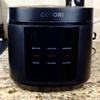
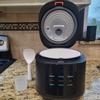


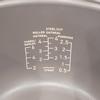
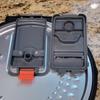
Best for small offices and work from home, the Brother HL-L2480DW Wireless Compact Black & White (Monochrome)
Multi-Function Laser Printer is the affordable 3-in-1 option for exceptionally efficient printing, copying, and scanning.
This compact, multi-function wireless printer is an effective, time-saving addition to any home or small workspace. As
quick as it is efficient, the HL-L2480DW consistently produces crisp, easy-to-read black & white prints at speeds up to 36
ISO pages per minute (1) (ppm). Automatic duplex printing saves time and reduces paper waste, while the 250-sheet
capacity paper tray (2) decreases paper refill frequency. With an integrated 2.7” touchscreen, navigation is simple and
straightforward, and the touchscreen allows you to print-from and scan-to popular cloud-based apps. (3) Flexible
connection options include dual-band wireless, Ethernet, and USB 2.0 interfaces. Plus, advanced security features help
protect your information and maintain secure connections while you're printing
Customer Rating

5
Fast prints & copies, best for sharp/crisp text
on January 7, 2024
Posted by: ReviewedByPhil
I’ve used several Brother printers in the past and this is my third monochrome, or black and white only, printer from this brand. The HL-L2480DW is an all-in-one printer that can copy, scan, and print on a variety of media including envelopes, labels, letter and legal sized paper. It cannot, however, print in color nor send or receive faxes. It takes up a decent amount of desk space, and you’ll need to leave some clearance in front, behind, and above it to open the paper tray, rear panels, and scanner lid. That said, I found it surprisingly light at just over 22 lbs.
The machine is pretty simple to setup. After plugging it in and turning it on, I connected it to my home’s WiFi network from the touch display control panel, though you can also use an Ethernet cable for a wired connection or connect directly to your computer using a USB-B cable, if you prefer keeping the machine offline (cables not included). Using the color LCD’s menus is intuitive and user-friendly, however, I found the screen’s keyboard for entering my WiFi password very tiny and difficult to tap the right keys. If you don’t want to share the printer on your LAN, you can use a direct WiFi connection to another device that supports it.
Drivers and software for the printer can be downloaded from Brother’s website, and installation takes about 5 minutes. I was able to get started printing within about 10 minutes from unboxing. The paper tray on the bottom can be fully removed and holds up to 250 sheets of paper from A6 to A4 sizes. The back of the tray can even be extended to accommodate legal size paper (11x14 inches), though note that it will stick out of the back of the machine several inches when closed. Envelopes, labels, and other custom media can be fed into the manual feed tray that folds out from the front of the machine and is ejected from the rear return tray.
Sending print jobs to the printer wirelessly was fast, and printing started within a few seconds of hitting print. In terms of print quality, I found that text-only documents came out quite nicely. Lettering is crisp and clear, and print/copy speed was fast at 36 pages per minutes (ppm). The printer can handle 2-sided duplex printing sequentially and retracts sheets to print on the reverse side. The paper return tray can hold up to 100 sheets and has a flip out support flap for high volume printing.
Large graphics and photos, however, printed with less than “photo” quality. I found that across large images, there were very noticeable horizontal bands (light and dark) across the page. These persisted after multiple attempts at cleaning the toner cartridge, rollers, corona wire, and drum. Images also appeared much darker on paper (with default settings) than on screen, losing contrast, textures, and fine details in the print. I did not see a huge difference in print quality when setting the output DPI to 1200 versus the default 600, though contrast improved marginally. Fortunately, the banding isn’t apparent at all with text-only printing.
For scanning, you’ll choose upfront where to save the file from the menu, for example, to your computer, in an email, or to your linked cloud storage (e.g. Google Drive, Dropbox, SharePoint). Scanning a page of text produced clear, legible copies in about 10 seconds at the default 200 DPI; scanned text was easily recognized by the OCR software and the file contents could be copied and edited in word processing applications. There was little, if any, bleed-through when scanning a page with text on both sides. However, this machine cannot scan both sides of a page simultaneously or automatically, and you must manually flip the sheet in order to scan the other side. After each scan, the control panel will ask you if there are more pages so you can save them as a single PDF file.
Scanning photographs at 200 DPI, on the other hand, produced results that were a little lighter than their physical originals, with a warmer tint and softer focus. When zooming in on a 200 DPI image scan, there was a bit of a grid effect due to data compression/loss, though the scans managed to capture most of a photo’s details with accuracy and good color and saturation. When scanning at the max resolution of 600 DPI, each scan took longer, about 30 seconds, and individual pixels were less noticeable with smoother edges and little noticeable grid effect. However, there was a slight rainbowing of grayscale colors. With photocopies, it was much the same results as with scanning, and I noticed text in photocopies appeared slightly darker and thicker, so regular font appeared slightly “bold” faced.
You can print from a mobile device using the Brother Mobile Connect smartphone app. This app requires you to login or create an account to link your printer. Once linked, “Scan to Mobile App” will also appear in the Scan options on the printer’s control panel. Just make sure your phone and printer are connected to the same network. In the app you can print documents and photos or initiate a scan that saves directly to your phone. You can also manage or sign up for Brother’s Refresh EZ Print Subscription, an automatic toner refill program; a 4-month free trial is included with this printer.
A feature that may be useful for folks using the printer in a shared office environment is the ability to send a secure print job to this printer’s queue; this will require a user to enter a password/PIN entered on the machine’s LCD in order to complete the print. Toner cartridges for this machine are the Brother TN830; a standard version yields up to 1200 pages while the high-yield XL prints up to 3000 pages for a lower cost per print. The starter cartridge included with the printer, however, will only last about 700 pages.
I like that you can add shortcuts for functions that you use often to the control panel’s menu, like Scan to Google Drive or Mobile App. One thing to consider though is that there is no automatic document feeder tray for scanning and copying a lot of pages. As these functions are single-sided, you’d have to do one sheet at a time, one side at a time.
Overall, the printer is great if you don’t need color printing and mostly print text, as it prints quickly both single-sided and duplex. Graphics will print fine but larger images won’t be “photo” quality. It also functions well as a scanner and copier with decent reproduction quality, though isn’t as fast or convenient with a large number of pages or at its highest resolution. The printer is easy to setup and share on a network with multiple ways to connect, and has a number of useful Internet capabilities like linking to cloud storage, scan to email, and secure remote printing.
I would recommend this to a friend!
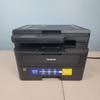
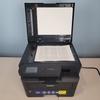
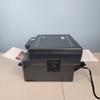
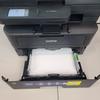
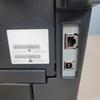
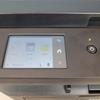
ReviewedByPhil's Review Comments
ReviewedByPhil has not submitted comments on any reviews.
ReviewedByPhil's Questions
ReviewedByPhil has not submitted any questions.
ReviewedByPhil's Answers
The Nest Doorbell is the battery-powered video doorbell that works with any home. See what’s happening at your door from anywhere and get intelligent alerts about important activity, like when there’s a person, package, animal, or vehicle.* And because there are no wires, you can install it yourself. Nest Doorbell requires the Google Home app and a Google Account – it’s not compatible with the Nest app or the home.nest.com site.
My existing doorbell chime (electric) says "must install diode" on the back, and there is a 1N4001 diode installed in my existing doorbell button. Do I need to use the diode in my installation of the Nest Doorbell if I'm hard wiring it to my chime?


The compatibility checker said my electronic chime and transformer are compatible, but the video instructions for a wired installation of the Nest Doorbell (battery) doesn't make mention of installing a diode (or not), if one comes with the chime. At any rate, I performed the installation without it and adjusted the "length of ring" setting to 6 seconds, which is nearly long enough to play through the melody, though it loses power and cuts off at the end. Any longer setting results in the chime beginning to repeat before it gets cut off which I find less desirable.
2 years, 7 months ago
by
ReviewedByPhil
The Blueair Classic 280i air purifier brings clean, energizing air to spacious bedrooms, living rooms, or any rooms up to 279 sq. ft. A built-in air quality sensor makes it easy to confirm your air is virtually free of asthma and allergy triggers and indoor air pollutants such as mold, dust, pet dander, and pollen by scanning the air quality in real-time and adjusting fan speed to your current air quality. The Classic 280i delivers unmatched performance thanks to HEPASilent technology, which combines electrostatic and mechanical filtration technologies. This combination, pioneered by Blueair, delivers a high Clean Air Delivery Rate (CADR) with whisper-quiet operation (32- 56 dB), using 20-80 W of energy.
HOW MANY FET DOES TRHIS BLUEAIR COVER
Play to your full potential with this 23.8-inch ASUS TUF gaming monitor. The 1ms response time prevents blurring and lagging for quality visuals, while the FreeSync technology eliminates stuttering and tearing for seamless gameplay. This ASUS TUF gaming monitor has an anti-glare display that reduces reflections, and it features flicker-free technology that reduces eye strain for comfortable viewing.
Will this monitor support 144mhz for Xbox 1x over HDMI, is the HDMI ports 2.1?
The HDMI port on the monitor is HDMI v1.4, so on the Xbox One X it'll only allow you to output at 1080p @ 60fps and only goes to 75Hz.
4 years, 1 month ago
by
ReviewedByPhil
Record 4K UHD videos and capture high-quality stills with this Canon EOS M6 Mark II camera. The 32.5MP APS-C image sensor lets you take detailed, true-to-life photos, while the electronic shutter capable of speeds up to 1/16000 is ideal for taking professional-caliber action shots. This Canon EOS M6 Mark II camera comes equipped with an 15-45mm f/3.5-6.3 interchangeable zoom lens for wide-angle and short telephoto shots..
Does it have a self timer/self-timer delay or remote compatibility?
Yes, the self-timer can be set to 10 seconds, 2 seconds, or continuous, which takes 2 to 10 photos consecutively after a 10 second timer expires. You can use your smartphone as a Bluetooth remote control as a shutter trigger, or connect the phone via WiFi to the camera for remote monitoring (see what the camera sees on your smartphone screen) and control all the settings on the camera through the app.
4 years, 3 months ago
by
ReviewedByPhil
The reliable, robust Brother HL-L3290CDW compact digital color printer with copying and scanning capabilities is a great choice for the busy home or small office. The flatbed scan glass provides convenient copying and scanning. Quick print speeds of up to 25 pages per minute¹ plus manual feed slot accommodates varied printing needs and can handle a variety of paper types and sizes including card stock, envelopes and more. Connect with versatile options including built-in wireless or USB interfaces and print wirelessly from mobile devices. The 250-sheet capacity adjustable paper tray helps improve efficiency with fewer refills and handles letter or legal sized paper. Automatic two-sided printing helps save on paper costs. Brother Genuine high-yield toner replacement cartridges help lower printing costs. Comes with a 1-year limited warranty and free online, call or live chat support for the life of your product.Prints and copies up to 25 ppm in black and up to 25 ppm in color
What language does this printer support? Does it support Chinese mandarin?
No, Chinese is not supported on the LCD for the printer settings. It looks like the LCD can only display Latin and Slavic based characters e.g. English, French, Russian, Polish etc..
4 years, 6 months ago
by
ReviewedByPhil
Winning in business means working smarter. This HP Color LaserJet Pro M479fdw printer is designed to let you focus your time where it's most effective - growing your business and staying ahead of the competition.Prints up to 27 ISO ppm*, up to 27 ISO ppm* in color
If this printer is connected via USB to a computer, can other computers print wirelessly to it? I need to have it connected by USB to my work computer but also want to be able to use it for wireless personal printing from two other household laptops.
Yes, you can connect to the printer wirelessly using a direct WiFi connection (local network between the printer and computer) without connecting the printer to your router/home network. You can also connect wirelessly via Bluetooth. You'll get the most out of wireless printing features by connecting the printer to the internet by providing it your home WiFi network SSID and password. Once connected to the internet you can turn on Web Services and print from any device with e-mail capability by simply sending the file to be printed to a uniquely assigned e-mail address for the printer. This will also enable other computers and devices on the network to find and send print jobs to the printer.
4 years, 8 months ago
by
ReviewedByPhil
What does it mean for a webcam to be portable?
Simply that it is small and is versatile in terms of mounting options, for example, if it can be clipped to a laptop monitor as well as a LCD panel or set on a desktop or used with a tripod. They usually still need to be plugged in via USB and require software/drivers to run. Not many are compatible with mobile devices.
7 years, 3 months ago
by
ReviewedByPhil

